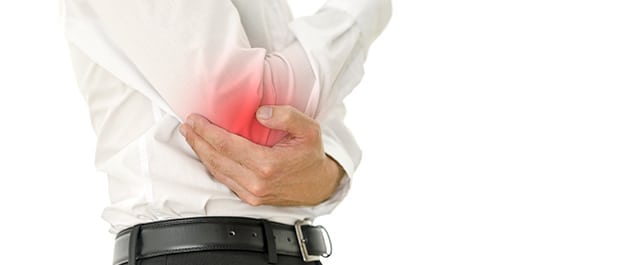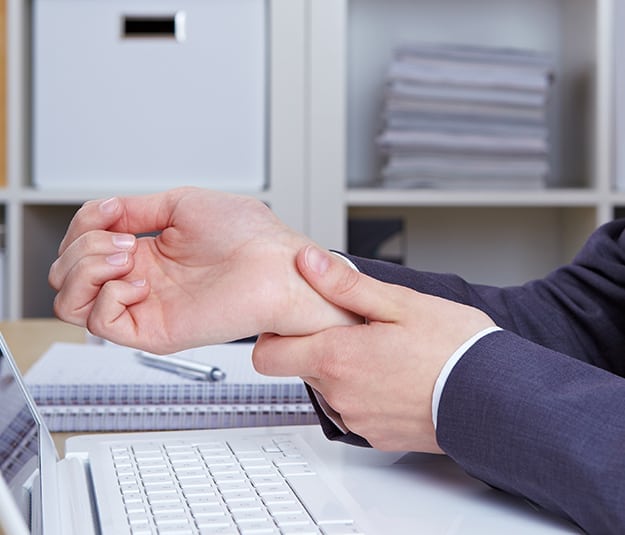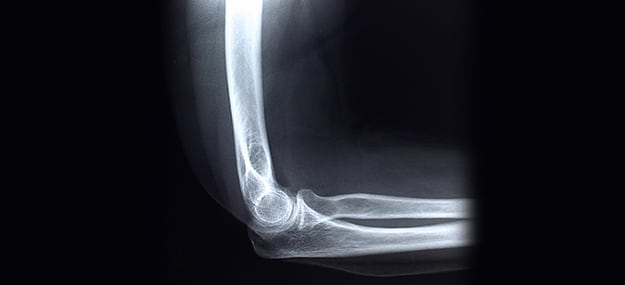
Your arms and hands are subject to many overuse injuries and conditions.
The arms and hands get so much use that any injury or issue can take extensive time to heal properly. Conditions that can affect your hands and arms include all types of injuries and more complex orthopedic issues.
- Our orthopedic specialists are experts in diagnosis and treatment methods
- Contact your doctor immediately in cases of injuries or sudden changes
CONTACT US TODAY
- Carpal tunnel syndrome – When the nerve running from your hand to your forearm becomes pressed, carpal tunnel syndrome is the result. Carpal tunnel syndrome has many risk factors, including hand overuse, hormonal changes, and heredity. Its symptoms include pain and numbness and tingling in your wrist and hand, which can occur at any time. Non-surgical treatment methods for carpal tunnel syndrome are bracing, activity modification, and steroid injections. Surgery involves dividing the top of the carpal tunnel to minimize pressure.
- Distal radius fracture – A fracture of the distal radius is also referred to as a broken wrist. The types of fracture can vary in severity, and are commonly the result of falling on to an arm that is outstretched. Typical symptoms of distal radius fracture include bruising, swelling, tenderness, pain, and visual deformity. In most cases, a splint or plaster cast is used in order to keep the bone in place so it can heal properly. For more severe fractures, surgery is used to align the bones.
- Elbow dislocation – The dislocation of any joint occurs when the joint surfaces are separated. Elbow dislocation typically occurs due to a fall on an outstretched hand. If the dislocation is more complex, it will also include ligament and bone injuries. Symptoms of elbow dislocation include pain and visual deformity. Pain medication and a manual realignment will reduce pain and correct the dislocation, along with a sling, splint, and early motion exercises. With more serious dislocations, surgery is necessary to restore alignment and sometimes to repair ligaments that are damaged.
- Elbow fracture – Elbow fractures can be caused by a fall or direct hit to the elbow. Also known as a broken olecranon, an elbow fracture usually occurs by itself. However, sometimes it surfaces as more of a complex injury. Sudden pain, bruising, tenderness, swelling, numbness in fingers, and difficulty straightening the arm are all symptoms of an elbow fracture. A sling or a splint can be used to keep the elbow in place to allow it to heal. For more serious fractures, surgery is utilized.


- Golfer’s elbow – The pain associated with golfer’s elbow occurs where your tendons attach to the bony bump of your elbow. Symptoms of golfer’s elbow include stiffness, weakness, and numbness. It’s not just golf that can contribute to the condition but football, baseball, and weight training as well. Physical therapy, medications, and icing are non-surgical treatments of the condition. Surgery to repair the tendon is needed in some cases.
- Tennis elbow – Similar to golfer’s elbow, tennis elbow is an overuse injury caused by inflammation of tendons on the outside of the elbow that results in pain and a weakened grip. In addition to tennis players, painters, carpenters, and athletes are at an increased risk of developing the condition. Physical therapy, bracing, and steroid injections are non-surgical approaches to treatment. Surgery to remove diseased muscle is needed in some cases.
- Trigger finger – Also an overuse injury, trigger finger is characterized by pain and locking of the finger. It is caused by the thickening of the sheath, which is located near the palm, and the resulting irritation of tendons. Anti-inflammatory medication is an effective treatment in early stages. For more extreme cases, surgery is performed to open the affected sheath.

